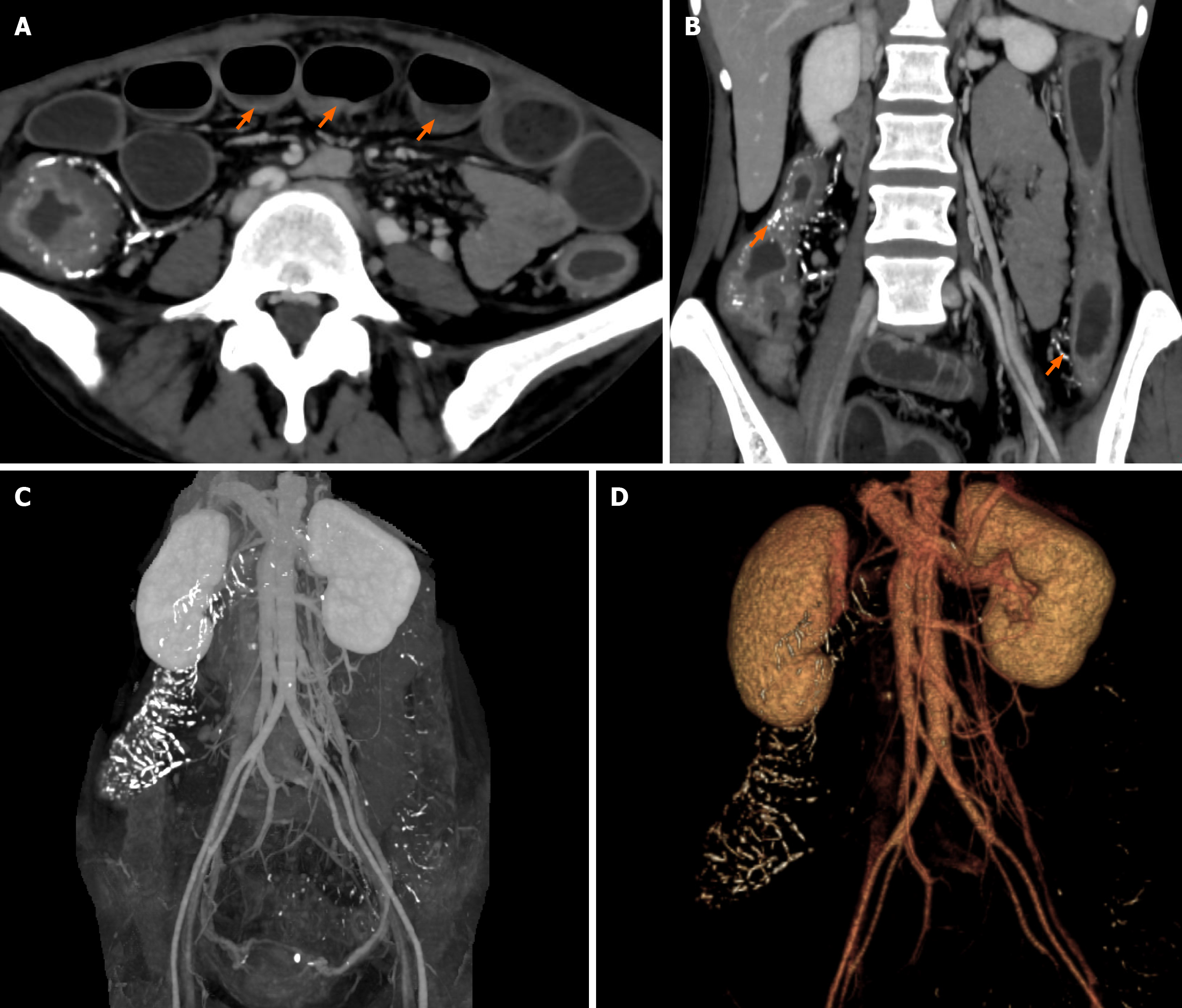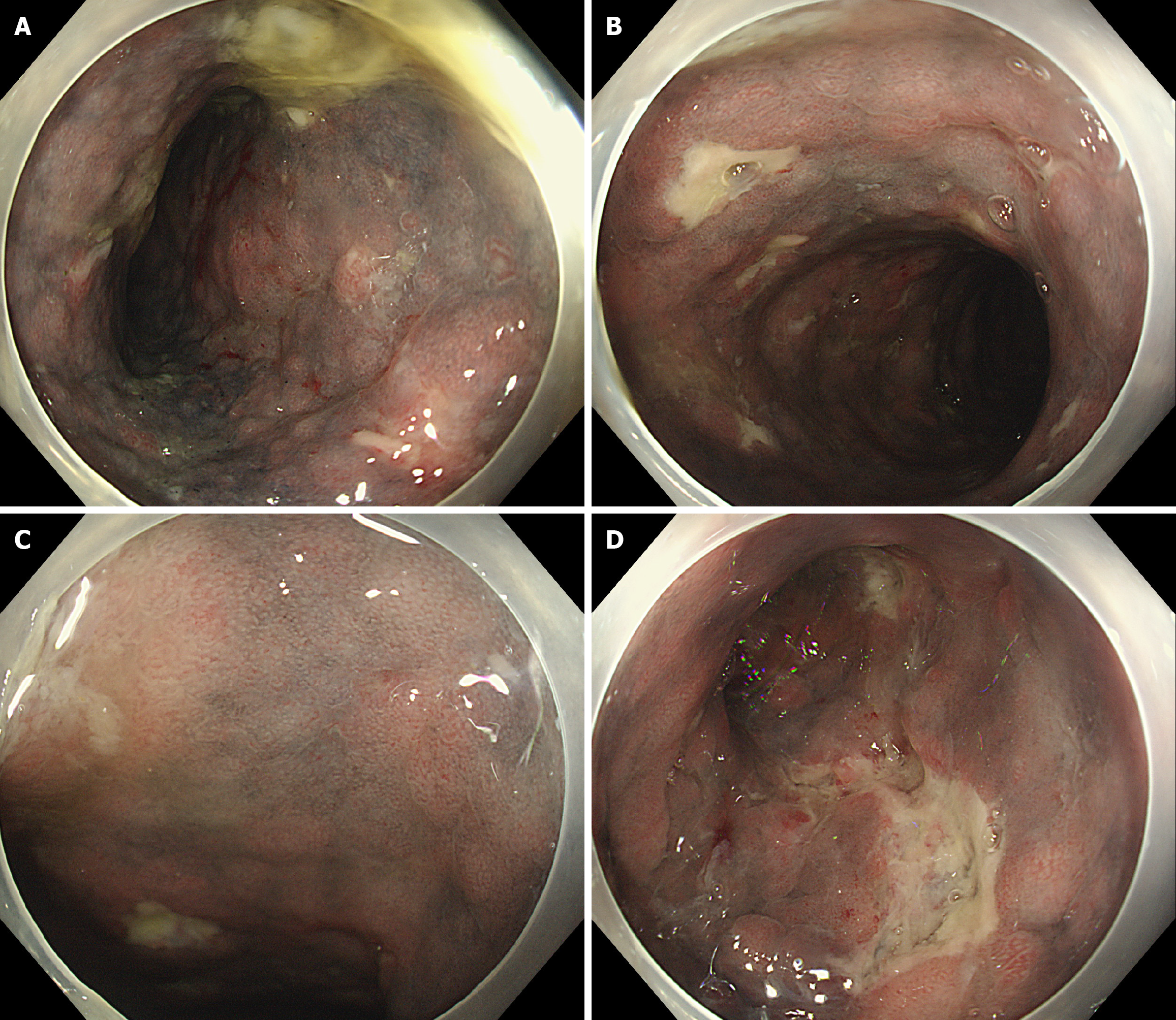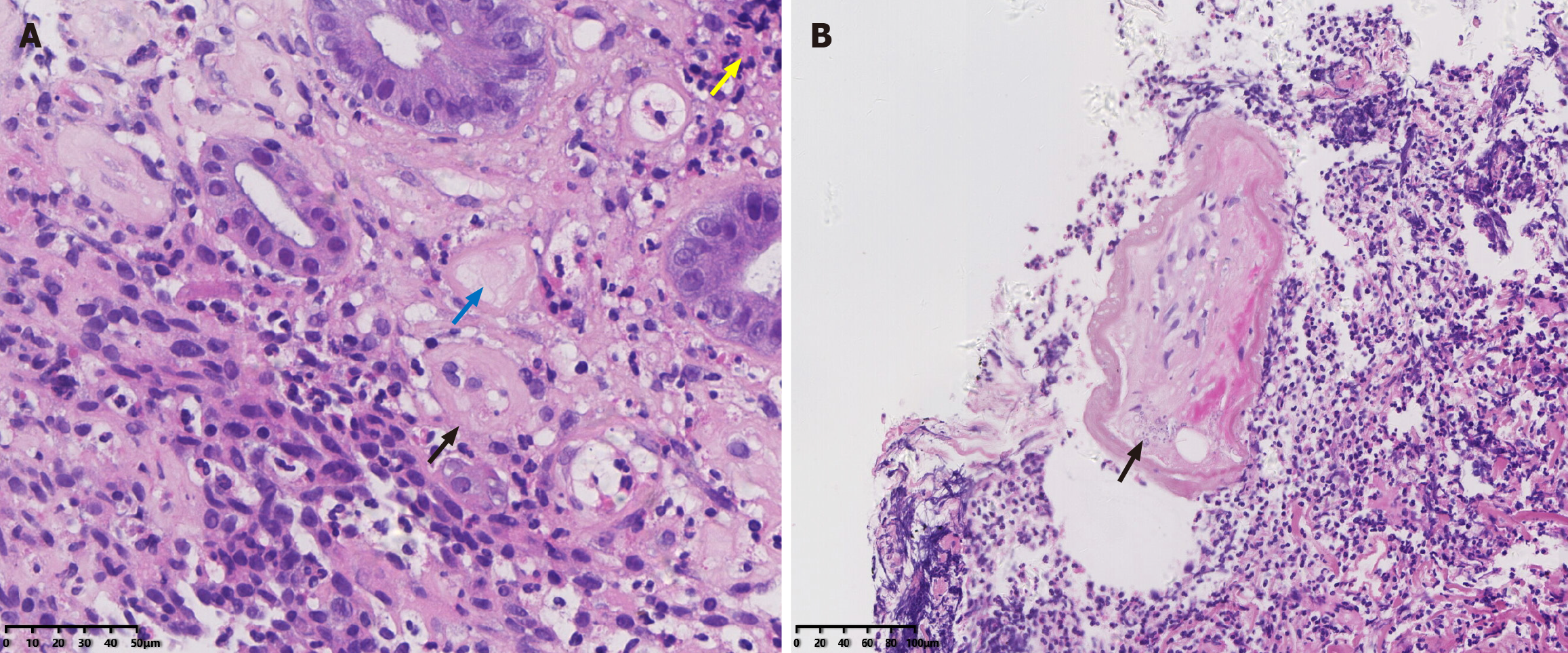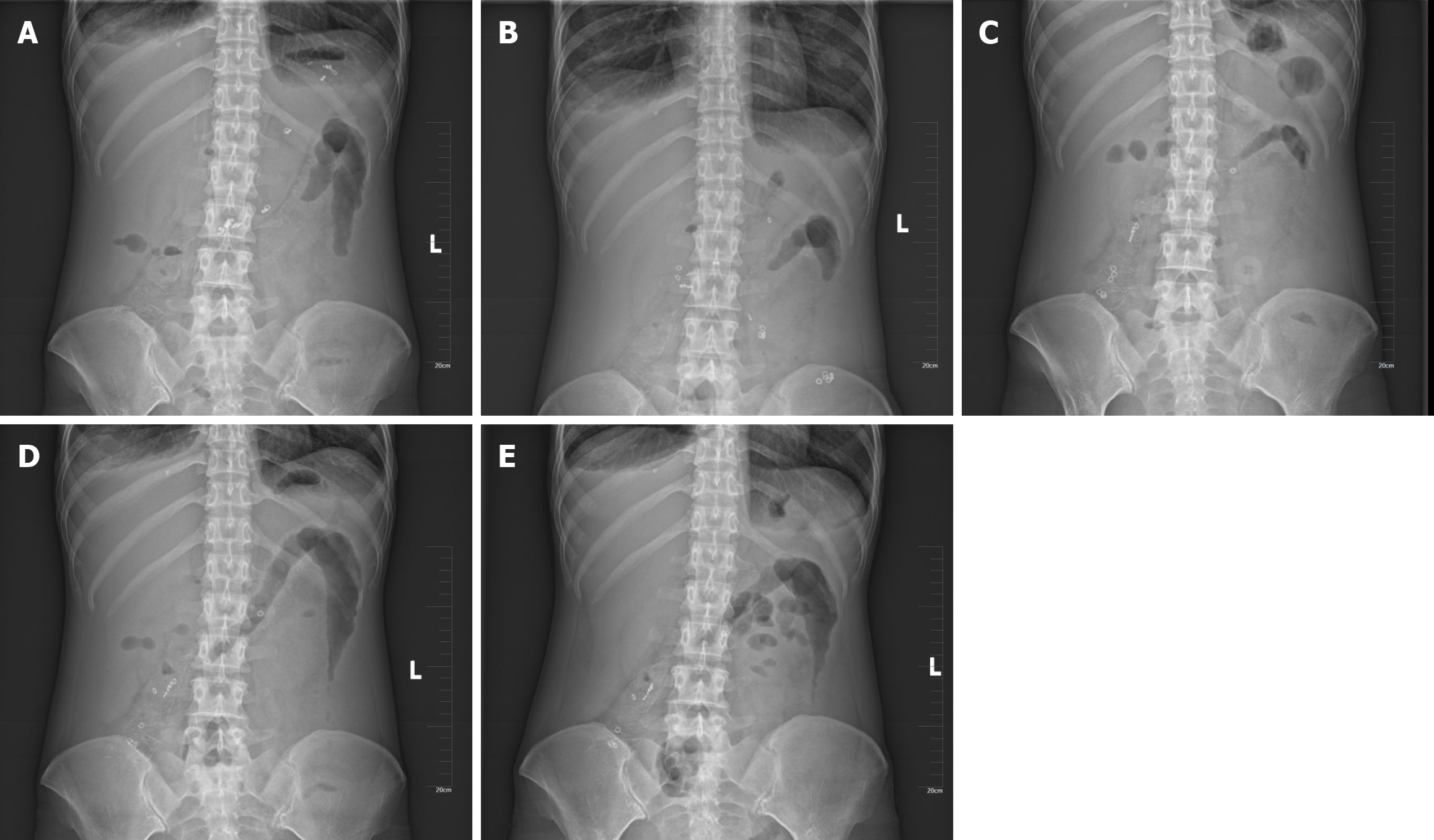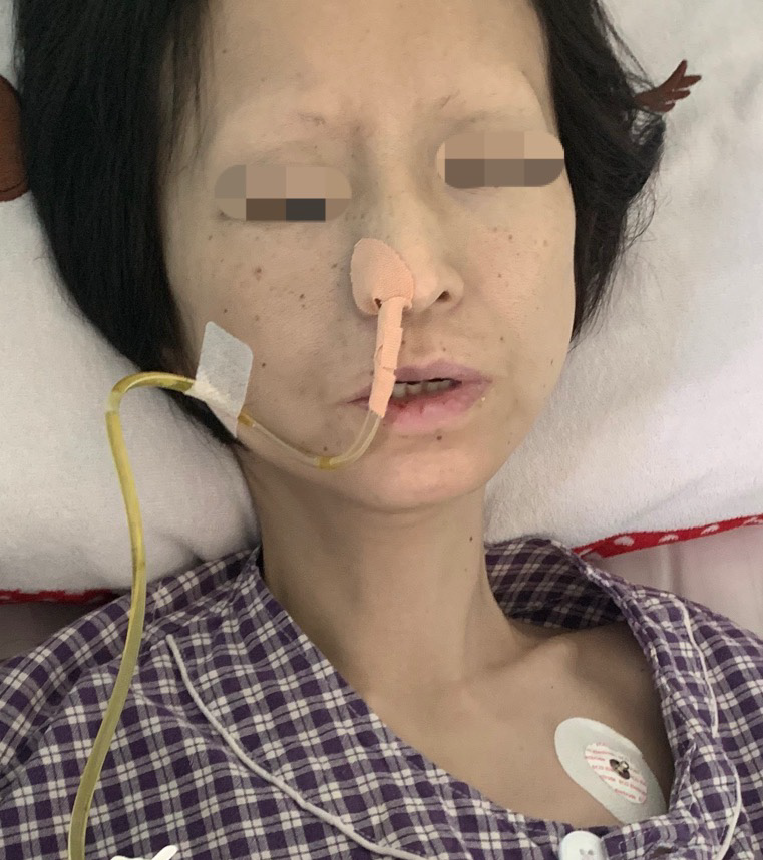Copyright
©The Author(s) 2025.
World J Clin Cases. Sep 6, 2025; 13(25): 105028
Published online Sep 6, 2025. doi: 10.12998/wjcc.v13.i25.105028
Published online Sep 6, 2025. doi: 10.12998/wjcc.v13.i25.105028
Figure 1 Abdominal computed tomography images revealing remarkable dilatation and fluid collection in the small intestine.
A: Orange arrow, calcification of the pericolonic vein; B: Orange arrow, thickening of the entire colon wall and distal ileum; C and D: Widespread calcification of the distal branches of the superior mesenteric vein and inferior mesenteric vein, among which the calcification of the superior mesenteric vein branches was more severe.
Figure 2 Colonoscopy images revealing dark purple mucosal surfaces with ulcerations of various sizes in the rectum, sigmoid colon, descending colon and transverse colon.
A: Transverse colon; B: Descending colon; C: Sigmoid colon; D: Rectum.
Figure 3 Endoscopic biopsy samples of the left colon.
A: Endoscopic biopsy pathology images showing inflammatory cell infiltration and the deposition of powdery fibrin in the lamina propria (yellow arrow, × 400), fibrous thickening of the wall (black arrow, × 400) of small vessels, a cellulose-like substance (blue arrow, × 400) in the submucosa; B: Calcification surrounding the mesenteric vein (black arrow, × 200).
Figure 4 Abdominal X-ray of gastrointestinal marker capsules at 3, 6, 24, 48, and 72 hours after collection.
A: 3 hours after collection; B: 6 hours after collection; C: 24 hours after collection; D: 48 hours after collection; E: 72 hours after collection.
Figure 5 Patient’s facial features.
The patient had a bronze complexion, similar to the color of her intestinal mucosa.
- Citation: Hou XL, Chen J, Cui MH, Yang GB. Extensive idiopathic mesenteric phlebosclerosis presenting as intestinal pseudo-obstruction: A case report. World J Clin Cases 2025; 13(25): 105028
- URL: https://www.wjgnet.com/2307-8960/full/v13/i25/105028.htm
- DOI: https://dx.doi.org/10.12998/wjcc.v13.i25.105028













